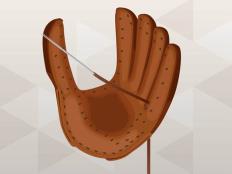
Deciding Which Type of Bat is Best For You
There are so many bat choices for baseball and softball players in today's game, it can often seem overwhelming. Understanding the differences between composite vs. aluminum bats is sometimes difficult for players - this wasn't an issue decades ago when wood was the only option. End loaded or balanced bats? The best bat for power hitters? The list of questions goes on. Here we'll look at how you can determine which type of bat is best for your style of play. In this guide, we'll look at the following topics:
- Contact vs. Power Hitters
- Wood vs. Aluminum vs. Composite bats
Contact Hitters vs. Power Hitters
Contact Hitters
Everyone loves being able to knock the ball outta the park for a home run. Unfortunately for some, power just isn't in their repertoire, but that doesn't necessarily have to be a negative. Home runs or not, you can still be a major player for your team by understanding your role as a contact hitter. Contact hitters will:
- Consistently get the ball in play
- Have great bat control
- Gain bat speed
The best type of bat for a contact hitter will be one that is balanced with weight distribution throughout, allowing for all of these goals to be attained.
See our recommendation for contact hitters:

RAWLINGS TRIO BALANCED BBTRIO BBCOR (-3) ADULT BASEBALL BAT
Power Hitters
When you're batting in the middle of the order, there is a high likelihood that you are a power hitter who can be a game changer with a single swing of the bat. If this is you, you likely:
- Maintain good bat speed
- Have strength
- Often hit the ball far
The best bat for power hitters is an end loaded bat that allows you to hit the ball farther. The difference between end loaded and balanced softball bats is the weight distribution. Essentially, "end loaded" means that a 28 ounce bat feels like it's 30 ounces. This is because there is more weight at the end of the bat, allowing the batter the chance to hit for more power, while sacrificing in bat speed. A balanced bat swings exactly how it weighs and allows for ideal bat speed and control.
See our recommendation for power hitters:

DEMARINI 2015 STADIUM CL22 END LOADED SLOWPITCH SOFTBALL BAT
The Big Debate: Wood vs. Aluminum vs. Composite Bats
Wood Bats
Many leagues have switched to wood bats for reasons including safety and cost.
Key points about wood bats:
- Less forgiving than aluminum or composite
- Require more precision during contact to hit the ball farther
- Make it easier to determine the best weight, length, and style of bat you should use
- Potentially more durable, unless broken due to a miss-hit
- Don't need to break in
When you're training and trying to improve your contact, a wood bat is best. In most levels of play, it's usually easier to transition from wood to metal, as opposed to the opposite, since a wood bat is less forgiving and has a smaller sweet spot. The best wood bat for contact hitter practice is one that allows you to get greater speed through the zone. Generally speaking, contact hitters typically swing ash bats and power hitters most often use maple bats as the material is the strongest and doesn't have much give. It isn't uncommon for players looking to advance to the next level to use wood bats in their training regimen, as they're known to help improve bat speed and strength.
See our recommendation for wood bats:

DEMARINI S243 PRO MAPLE COMPOSITE BASEBALL BAT
- 1
- of
- 2









Discuss This Article